In a constantly changing and uncertain world, the farmer who set up the Mangapps Railway Museum in rural Essex has revealed exclusively to Peter Brown that the site he has transformed into a working environment with standard gauge stock is to continue, although there will be no track expansion beyond the boundaries of his fields.
Expectations of an announcement have been rife since founder John Jolly reached his 70th birthday and recently gave up active farming to concentrate on the railway operation at Burnham-on-Crouch. The popularity of the museum means further expansion of exhibits and strengthening of a project that began in a field with some track and has now transformed into a railway line that many visitors think was originally a working part of Britain’s network.
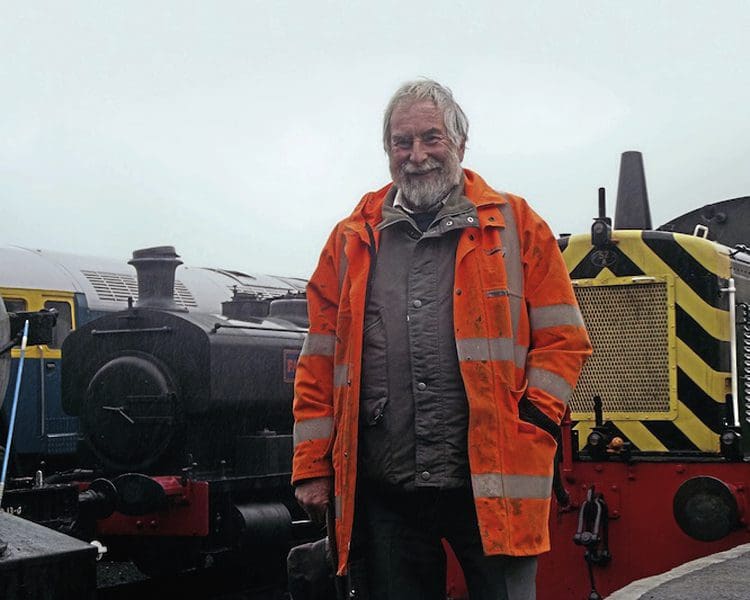
This magazine has recently made two visits to the site – exactly a fortnight apart – and on the second occasion it was discovered in that time even more exhibits have been arriving at the museum from a variety of sources, supporting John Jolly’s claims of expansion as visitor numbers continue to increase.
His fame has even spread across the Atlantic, leading to American authorities dubbing him the ‘railroad man’, which has caused him much amusement. But he points out that although the museum includes many items from East Anglia, much comes from further afield. It includes collections from Canada, France and Ireland.
Enjoy more Heritage Railway reading in the four-weekly magazine.
Click here to subscribe & save.
Railroad items
“Much of the pleasure that the Jolly family have derived from building the railway and museum comes from travelling in search of exhibits,” he confides. “On one such trip I arrived at the customs area of a US airport carrying a very large suitcase and an even larger box. ‘Hey’, said the customs officer, ‘I don’t think we’ve got a big enough box.
“What have you got in there?’ ‘Railroad items’ I replied. ‘You gonna build your own railroad?’ he asked. ‘No, done that already,’ I said, showing him a Mangapps brochure. At this point several of his colleagues gathered round and one grabbed me by the hand saying ‘let me shake your hand sir, I’ve never met a man who built his own railroad.’”
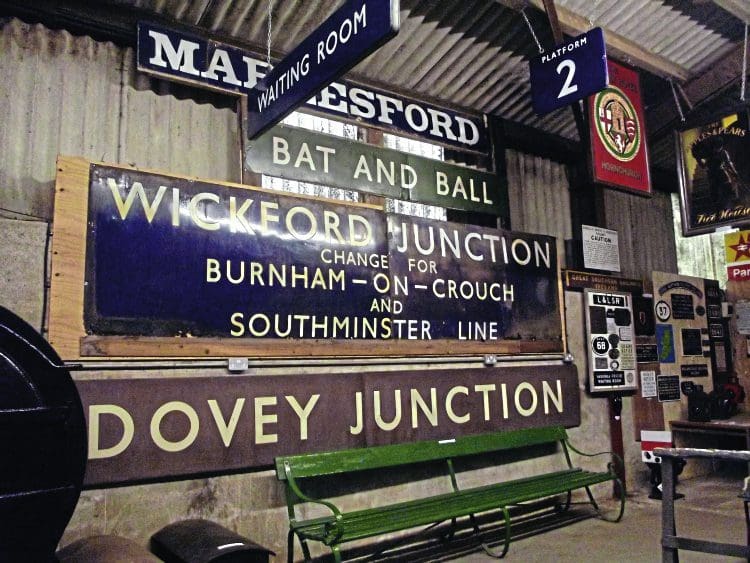
The success of Mangapps has led John Jolly and his family to look at what to do next and it has become quite clear to them that it is not viable or practical to extend the railway, but the museum just keeps on expanding with very diverse items. One of the latest to emerge on one of our visits was a Great Eastern Railway horse measuring stick that was used when the company went out to buy horses. It is thought to be from around 1905.
“Every week something fresh turns up,” Jolly tells us. “We looked at expansion of the line itself but if you make a longer line you have to pay for maintenance – every operator is aware of the wear and tear and looking at all that would not have been justifiable and for our present one-mile-round passenger line would have brought no benefit. The museum collection keeps on expanding into different areas and we are improving the facilities.”
With a total of 20 locomotives, the site offers diversity among the seven steam and 13 diesel examples. The steam stock is: BR standard 2-6-4T No. 80078 built at Brighton, 1958; 0-6-0ST No. 358 Minnie from Skinningrove Steelworks, built by Fox Walker in 1878; 0-6-0PT No 2631 Brookfield from Brookfield Colliery, built by Bagnall in 1940; 0-6-0ST ex-National Coal Board, No. 3061 Empress, built by Bagnall in 1954; 0-6-0ST No. 469 Hastings, built by Hunslet in 1888; 0-4-0ST ex-NCB No. 8 (2157) built by Andrew Barclay in 1943; and 0-4-0ST ex-NCB Toto, built by Andrew Barclay in 1919.
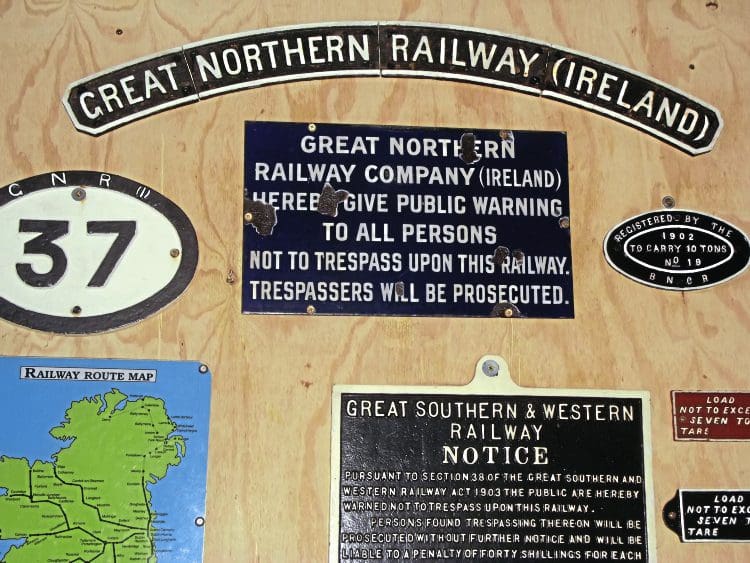
But it is the smaller items that take such a lot of time to gather with care, as is clearly demonstrated with one of the latest museum exhibits to arrive at Mangapp’s – a fogman’s hut found three years ago along the route of the former Maldon branch line that fell to the Beeching axe in 1966. Because of its inaccessibility and the practical difficulties involved in recovering it, it was not until August this year that it joined the collection.
“It’s not often that sizeable pieces of railway history are found in the wild but some three years ago a couple visiting Mangapps told us of a small concrete building that still existed, almost hidden by vegetation, on the former railway near Maldon,” Jolly reveals. “On investigation it transpired that what they had found, about 200 metres east of the remains of Langford & Ulting station, was a British Railways standard concrete fogman’s hut, so well hidden by undergrowth that although only three metres from the former trackbed – now a public footpath – I walked past it twice before finding the building.
Justified being rescued
“Huts of this type were introduced in about 1950 and replaced earlier wooden structures. The hut had suffered some superficial damage as a result of almost 50 years of disuse and vandalism, but we felt it justified being rescued. We contacted the county council, which kindly donated the hut to Mangapp’s Railway.
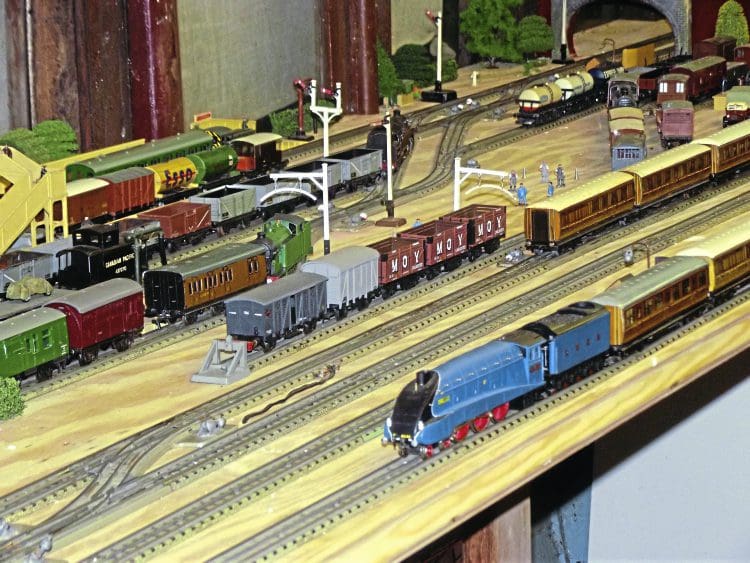
However, it has taken almost three years to work out how to remove the structure without causing further damage and overcome complicated problems of access.”
He adds: “Early one August morning a team of Mangapp’s volunteers, with the railway’s truck and trailer and a telescopic forklift loaned by Sonic Rail Services, arrived at Langford and the hut was quickly and safely recovered. Almost half a century after it was last passed by a train, it’s back on a working railway.
What led this man – born in 1944 – into the world of railways? It appears to initially have been the influence of his mother, who was living in Darlington in 1925 where she attended the centenary celebrations of the Stockton & Darlington Railway, which led her to start collecting in a very small way.
“She got from there a catalogue and small medal and that was my grounding in railway history,” he tells. “Her mother lived in Colchester and we would regularly travel by train to St Botolphs station (now Colchester Town), which later I found quite interesting. My parents bought a Hornby 00 train set in 1952,” he said.
“When my mother was in Saltburn she visited the old LNER museum at York. Then in 1956 I went to the centenary celebrations of the London, Tilbury & Southend Railway at Southend Central. At the nearby Odeon cinema was an exhibition of railway memorabilia which I found fascinating and from which I developed a strong interest in railway history. Naturally, I also became interested in trainspotting; the late Ian Allan was something of a hero.”
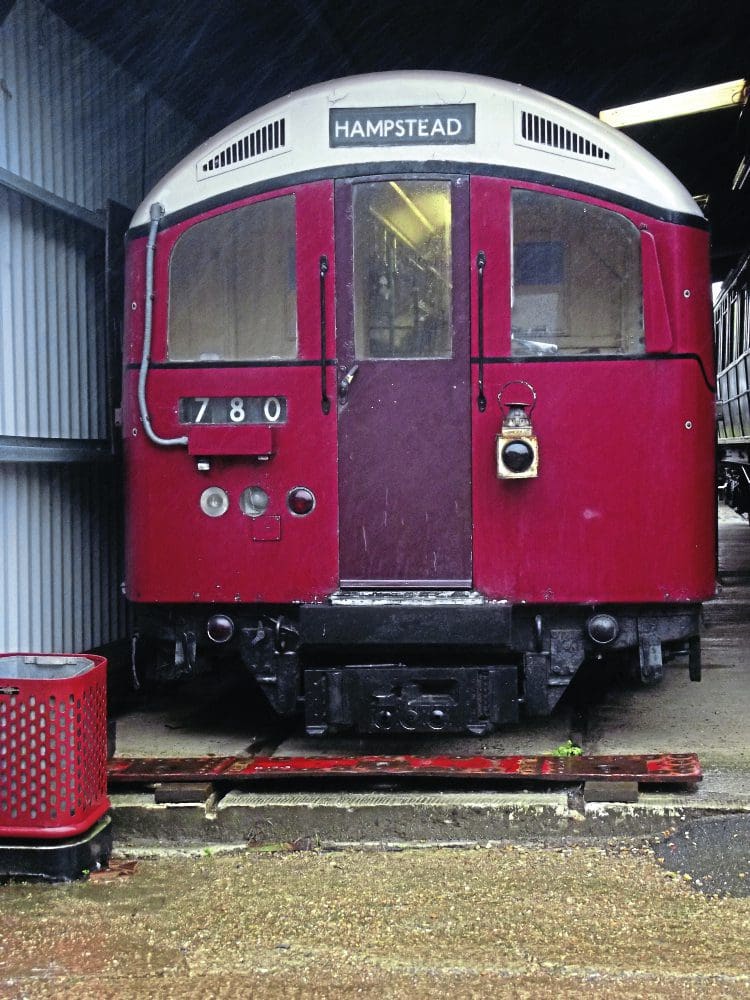
With early signs of collecting and trainspotting his top priority, the family was now living in Essex and that was when one of his teachers played a major role in the development of Jolly’s interest in railways. In the late 1950s young Master Jolly was not progressing well in his maths studies.
His teacher, Mr Jennings, discovered something that might attract his attention – railways! In 1958, the year before Jolly left school, Mr Jennings arranged a guided tour of Stratford Works. A second such tour took place and the boy was really hooked.
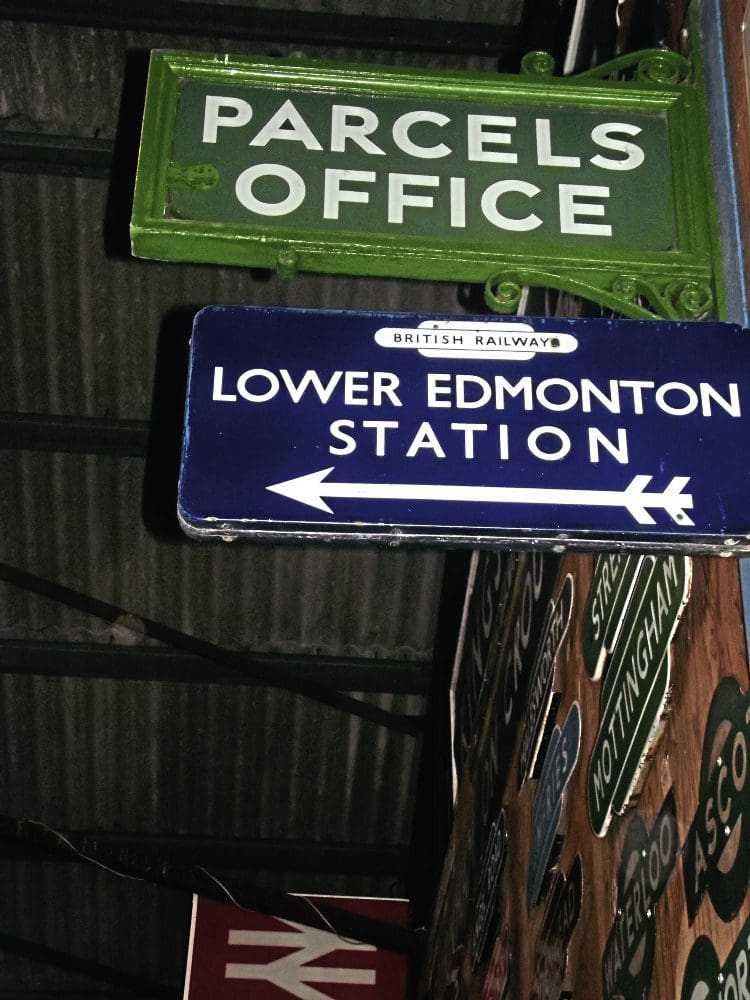
“In 1960 a friend of mine who worked at Southend motive power depot invited me to look over their new diesels,” reveals Jolly. “The locos themselves, although looking very smart, were not especially impressive being the North British Type 1s (D8400 class), possibly the least successful that BR ever bought. I then asked if we could look at the lines of steam locomotives waiting scrapping and parked in the carriage sidings.”
Major upheaval
“On the footplate of J17 0-6-0 No. 65503 it was suggested I might like a souvenir. I was given the gauge glass frame, which became the first sizeable item of railwayana in my collection, which remains to this day. Shortly after this I attended college at Colchester and as a result I became a commuter between there and Hockley. It was a fascinating time to be travelling on the railway, as it coincided with the end of steam, the introduction of diesels and the major upheaval connected with the conversion of the electric services in Essex from 1500v dc to 25kv ac. As a result you could find yourself with steam, diesel and electric haulage in one relatively short journey.”
He continues: “Then, in about 1962, calamity struck. Steam ended at Stratford, Dr Beeching got into his stride and I had to start serious work on the farm and I discovered girls.”
So there he was like the rest of us at that age having to start serious work – in his case on a farm – and he admits to discovering girls. All of which resulted in his interest in railways taking a backseat for a decade. In the meantime he married June in 1970 and two years later he sold the farm in Essex and moved north to Halesworth in Suffolk, where by chance their farmhouse was only about 150 yards from the East Suffolk Line.
“By the time we moved we had a two-year-old son who, occupying the bedroom overlooking the railway line, became an enthusiast,” says Jolly. “This reawakened my own interest. I had soon made contact with the Halesworth signalman Peter Punchard, a railway historian and railwayana collector. Peter’s aim was to preserve his signalbox, which was threatened by the forthcoming rationalisation of the line and with other enthusiasts we started raising money to that end.”
The signalling field
“There was much else that required preservation and so I started collecting items from the East Suffolk Line, particularly in the signalling field. It did not take too long for us to have one room in the farmhouse filled with railwayana. Soon things got even more serious with the discovery that the waiting shelter at Brampton, the next station to the north, was likely to become redundant.”
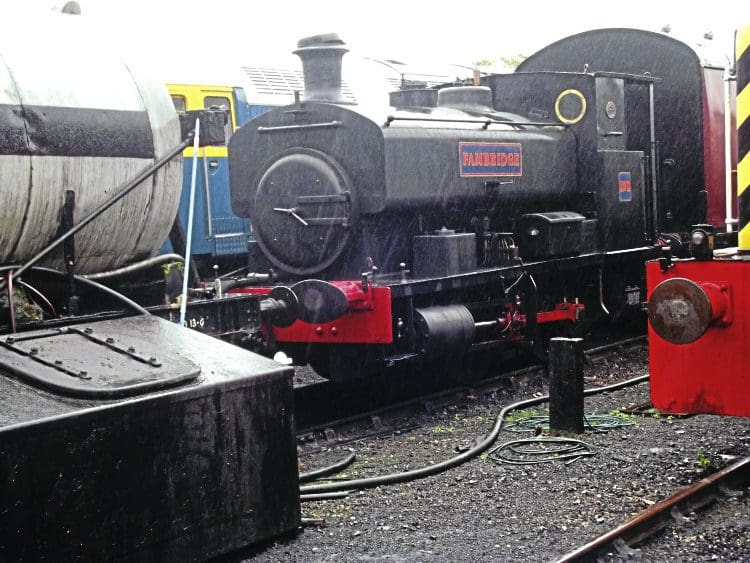
Wives are not always understanding of railway enthusiasts’ intentions, but Jolly’s spouse June was and said that it would make a very nice summer house and that he could put some of the collection (then in their house) in the proposed acquisition.
In 1984 the family decided to return to the Essex area and purchased a larger farm at Burnham-on-Crouch. No sooner had they settled in than a contact in the railway civil engineers department telephoned to ask if John still wanted the Brampton building. The answer, of course, was yes but then came the question: “Can you move it in three days?”
“Of course we could not,” Jolly declares. “But all was not lost because a neighbouring farmer who happened to be our Member of Parliament, Jim Prior, had obtained it with the same idea we had of using it as a summer house. Some months later it was still languishing on a trailer in his farmyard and I asked him if he had any plans for it? He replied that there were practical difficulties getting it into his garden so I quickly jumped in with an offer to relieve him of it, which he gladly accepted.
“In due course the Brampton waiting room was moved to Essex where, as was originally envisaged, it was set up in the garden, filled with railwayana with a wooden platform in front and equipped with suitable station furniture. We started to get some visitors and there were suggestions that we should open to the public.”
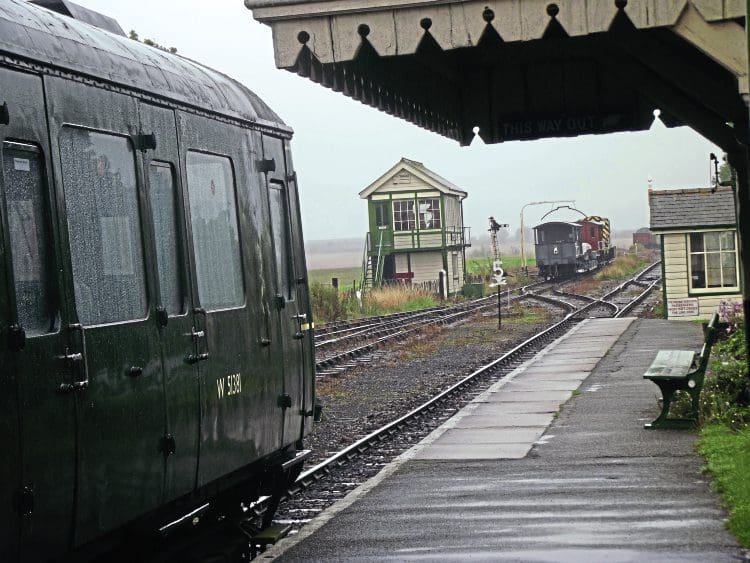
This was when farming was going through a difficult time and Jolly remembers the Government was encouraging farmers to diversify – so he saw it as a great opportunity to get help with his railway venture.
“We had a long redundant farm building and so the question was asked – could our collection of railwayana become our form of diversification?” Jolly points out. “Before that question could be answered there was a further chance development when we found and purchased an ex-BR class 04 diesel shunter, which had been working in an NCB depot. Once you have a loco you need track to put it on and rolling stock to put behind it.”
Operational steam loco
“Almost before we knew it we had moved from a static collection of memorabilia to the embryo of an operating railway. The loco arrived at Mangapps in April 1987 and there followed two years of frenetic work with further buildings being obtained, including two original station buildings from the
Mid-Suffolk Light Railway, various items of rolling stock and even, by pure chance, an operational steam loco.”
He goes on: “This came about after a neighbour suggested her railway enthusiast brother should come and see us. He turned out to be Richard Moore, who was half-owner of Bagnall 0-6-0ST No. 3061, which had just had its hydraulic boiler test and for which Richard was seeking a new home. Obviously he did not have to look too far. By the summer of 1989 we had a steam engine and two working engines.
“Our big break came when John Wilson, BR area manager at Liverpool Street, wanted to involve us in a big do celebrating the centenary of the Great Eastern Railway’s New Essex Lines network.
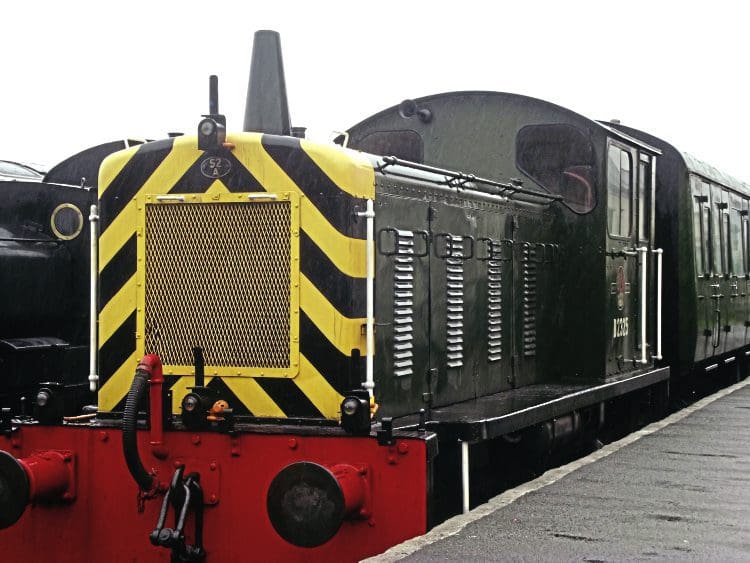
“They were offering a £1 rover ticket from Southend Victoria and asked us ‘can you organise a bus to get visitors to and from Burnham station?’ We obtained two buses but that was clearly not enough so BR sent three more. We finished up having five buses, which brought over 3000 visitors that August Bank Holiday.”
But success can also present problems and in this case at Mangapps it was realised that to create a sustainable business, the ability to give people train rides was required. Jolly admits they needed advice.
“I went to see Dick Hymas, the owner of the Colne Valley Railway, who suggested I contact the Railway Inspectorate and I was introduced to Major Peter Olver, who was semi-retired and dealt with heritage and minor railways,” Jolly said.
“As a result of his help and advice we extended the line and were up and ready to run on Easter Bank Holiday 1990.”
Oldest from the Great Eastern
The collection of carriages and wagons is also very impressive. The coaching stock includes an LNER pantry car from 1928 and brake 2nd class non-corridor No. 43264 of the Western Region dated 1956.
Number 123351, a GER boxvan dating back to 1881, is one of 24 vehicles in the collection of goods wagons which contains what is claimed to be some of the oldest from the Great Eastern era. Other interesting specimens include a 1932 SNCF ferry van
No. 5480384 and a 1950 BR fruit van
No. B754863.
There are eight brakevans in the collection, including a caboose van of 1981 from the Canadian Pacific Railway,
No. CP 434677. The seven exhibits in the engineers and special wagons section include a well trolley with gun mounting formerly owned by the Royal Navy, built at Swindon in 1915. Others in the moving collection include mainly manually propelled and road rail vehicles. Add these to the vast collection of station furniture signs and badges, plus other memorabilia and you have one of the most spectacular and unusual railway attractions in Britain.
Many may have thought that this was nothing but a potpourri of railwayana. It is nothing of the sort. It is a fresh look at presenting the railway scene of the past and its future now seems certain to continue and expand while in the hands of the Jolly family – John, wife June and son James, who has a career elsewhere within the railway industry.
Read more News and Features in Issue 239 of HR – on sale now!
Read more News and Features in Issue 240 of HR – on sale April 6!
Archive enquiries to: Jane Skayman on 01507 529423 – [email protected]
Advert
 Enjoy more Heritage Railway reading in the four-weekly magazine. Click here to subscribe.
Enjoy more Heritage Railway reading in the four-weekly magazine. Click here to subscribe.




